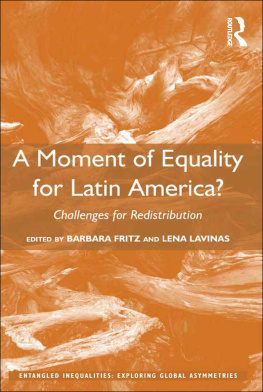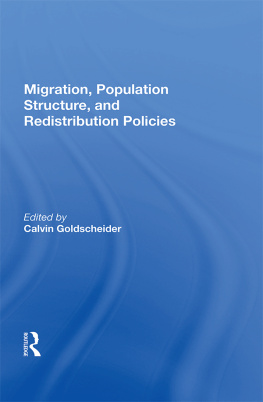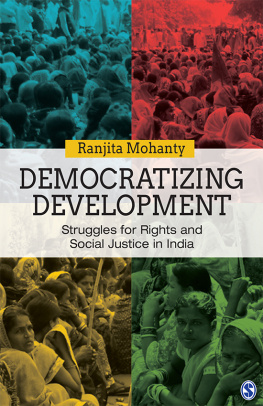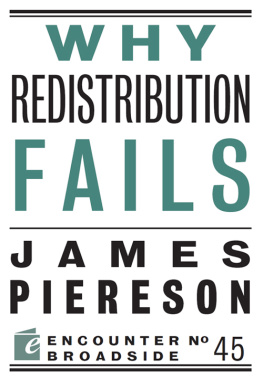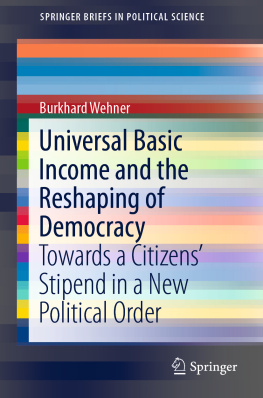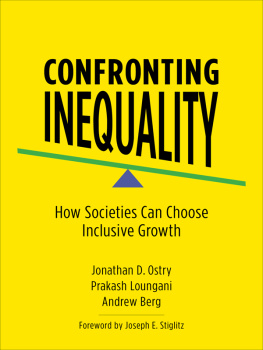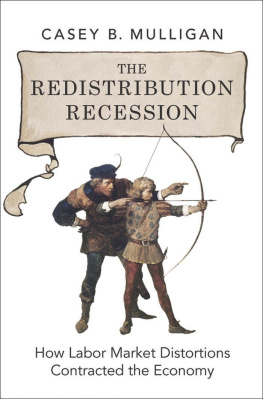Life Is a Little Better
Conflict and Social Change Series
Series Editors
Scott Whiteford and William Derman
Michigan State University
Life Is a Little Better: Redistribution as a Development Strategy in Nadur Village, Kerala, Richard W. Franke
jOigame! jOigame! Struggle and Social Change in a Nicaraguan Urban Community, Michael James Higgins and Tanya Leigh Coen
Manufacturing Against the Odds; Small-Scale Producers in an Andean City, Hans C. Buechler and Judith-Maria Buechler
The Bushman Myth: The Making of a Namibian Underclass, Robert J. Gordon
Surviving Drought and Development: Ariaal Pastoralists of Northern Kenya, Elliot Fratkin
Harvest of Want: Hunger and Food Security in Central America and Mexico, edited by Scott Whiteford and Anne E. Ferguson
Singing with Sai Baba: The Politics of Revitalization in Trinidad, Morton Klass
The Spiral Road: Change in a Chinese Village Through the Eyes of a Communist Party Leader, Huang Shu-min
Forthcoming
Gender, Sickness, and Healing in Rural Egypt: Ethnography in Historical Context, Soheir A. Morsy
The Culture of Protest: Religious Activism and the U.S. Sanctuary Movement, Susan Bibler Coutin
Computing Myths, Class Realities: An Ethnography of Technology and Working People in Sheffield, England, David Hakken with Barbara Andrews
Literacy and People's Power in a Mozambican Factory, Judith Marshall
Life Is a Little Better
Redistribution as a Development Strategy in Nadur Village, Kerala
Richard W. Franke
First published 1993 by Westview Press, Inc.
Published 2018 by Routledge
52 Vanderbilt Avenue, New York, NY 10017
2 Park Square, Milton Park, Abingdon, Oxon OX14 4RN
Routledge is an imprint of the Taylor & Francis Group, an informa business
Copyright 1993 Taylor & Francis
All rights reserved. No part of this book may be reprinted or reproduced or utilised in any form or by any electronic, mechanical, or other means, now known or hereafter invented, including photocopying and recording, or in any information storage or retrieval system, without permission in writing from the publishers.
Notice:
Product or corporate names may be trademarks or registered trademarks, and are used only for identification and explanation without intent to infringe.
A CIP catalog record for this book is available from the Library of Congress.
ISBN 13: 978-0-367-01164-2 (hbk)
This project was made possible primarily by Joan Mencher's generous sharing of her 1971 household survey from Nadur Village. Our field research was funded by National Science Foundation Grant BNS 85-18440. We were also aided by Separately Budgeted Research Grants from Montclair State College and the Montclair State Distinguished Scholar Award (1988). Our research in Kerala was facilitated by the Centre for Development Studies in Thiruvananthapuram. Among the many persons at the Centre who aided our research are former Director T. N. Krishnan, Research Associates K. N. Nair and T. M. Thomas Isaac, and Mr. Phil Roy. Researcher Nata Duvvury also provided many helpful ideas. Kannan Nambiar and Manu S. gave excellent Malayalam lessons.
In Nadur Village, M. S. Ravikumar Nambudiri, M. Subramariian Nambudiri, Raman Nambudiri, and Sreekumari M. G. supplied expert research assistance. We are also grateful to Nadur residents Mukhami Amma, Narayani Amma, and the late Madhavan Nair.
In the United States, Mira A. Franke and Lorraine Zaepfel did much of the computer data entry. We received excellent statistical advice from Professor Gil Klajman of the Montclair State Sociology Department. Deirdre Stapp ably prepared the maps. Barbara H. Chasin gave invaluable support throughout the project.
The tables in appeared in the Journal of Anthropological Research 48(2):81-116, 1992. We thank again the many critics and commentators on that book and article. We assume full responsibility for all data and analysis presented here.
Richard W . Franke
1
Development, Inequality, and Redistribution
Is redistribution of wealth an effective third world development strategy? Despite an ongoing expert debate about growth versus reform and the widespread occurrence of reform and revolutionary movements among the third world poor in the 20th century, this question has attracted little social science research at the local level. Most analyses refer to national level statistics. Few regional or village studies are available to assess the impact of reform strategies on the lives of the world's poorest peoplemost of them third world farmers and farm laborers.
This book is an attempt to fill part of the gap by measuring the achievements and limitations of a large-scale reform process. It is a study of Nadur Village in central Kerala. We chose to conduct a detailed anthropological village study in Kerala State, India, because radical peasant and worker movements there have brought about one of the third world's most extensive experiments in the redistribution of wealth and productive assets. Per capita income in Kerala in our study year 1986-87 was only about $182 in 1986 compared with the all-India figure of $290. Kerala's income increased little from its early 1970s level of $126 per year. If Kerala were a separate country in 1986, it would rank 9th from the poorest of 130 (Morris 1979:64; GOK 1988; World Bank 1988).
Though not intended or desired by Kerala's planners or its people, this income stagnation has the effect of making Kerala a controlled scientific laboratory of the consequences of the reforms which become the most likely explanation for any material improvements in people's lives. Just how substantial these improvements are can be seen from .
Physical Quality of Life Indicators: 1986 Kerala State Versus All-India, Low-Income Countries, and the USA
|
| Indicator | Kerala | India | Low-Income Countries | USA |
|
| Per Capita GNP | $182 | $290 | $200 | $17/480 |
| Life Expectancy in Years | 68 | 57 | 52 | 75 |
| Infant Mortality |
| Rate Per 1,000 | 27 | 86 | 106 | 10 |
| Birth Rate Per 1,000 | 22 | 32 | 43 | 16 |
| Adult Literacy Rate |
| Percent | 78 a | 43 b | 48 c | 96 d |
| PQLI (0-100) | 82 d | 56 | 59 a | 96 a |
|
Sources: World Bank 1988:222-223, 276-277, 286-287; GOK 1988; GOK 1989:82; and Nag 1989:417.
Notes: Data closest to the 1986-87 study year were used in all cases. Kerala's per capita GNP was calculated at the rate of 13 rupees per U. S. dollar, the approximate rate of exchange in 1986-87. "Law-Income" refers to the average of 37 countries so designated by the World Bank and excluding China and India. The PQLI figure for the low-income group is for 143 countries so designated by Lewis



